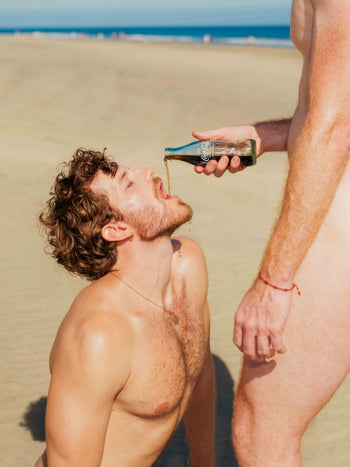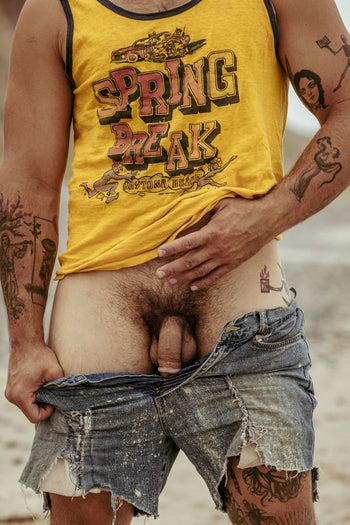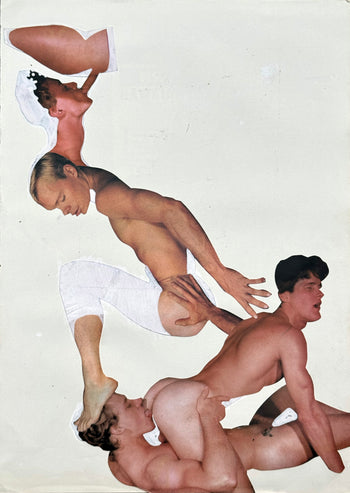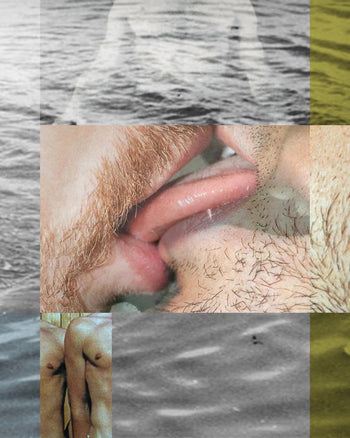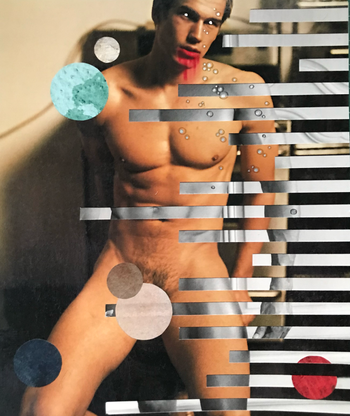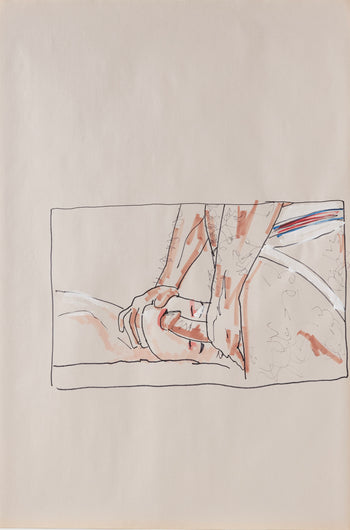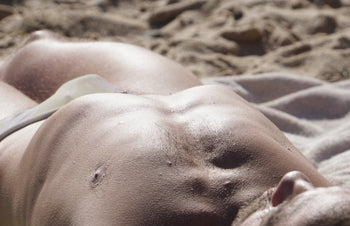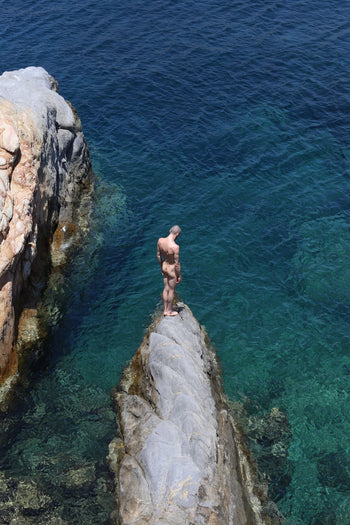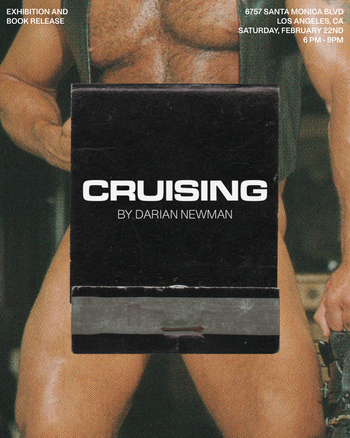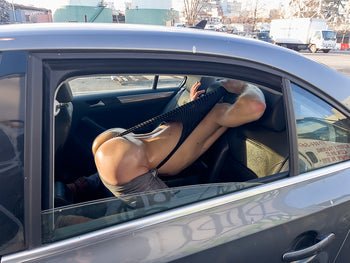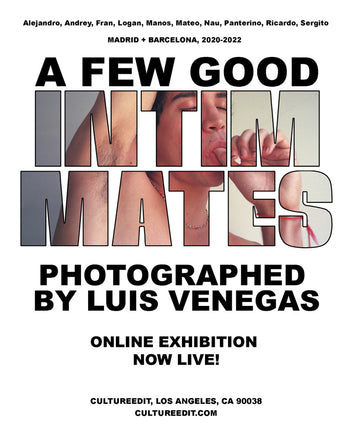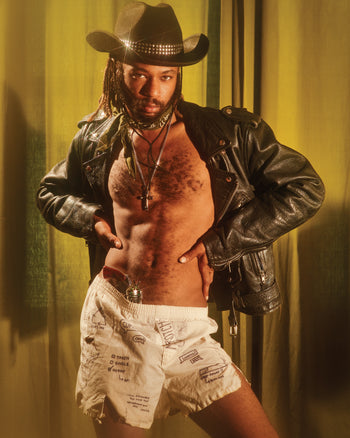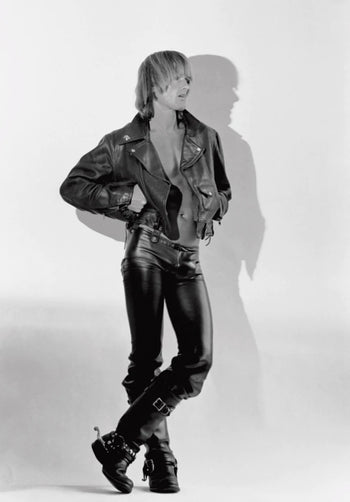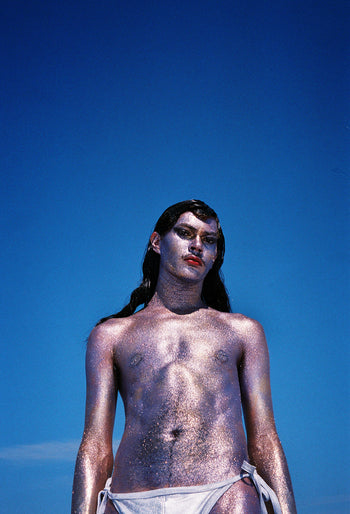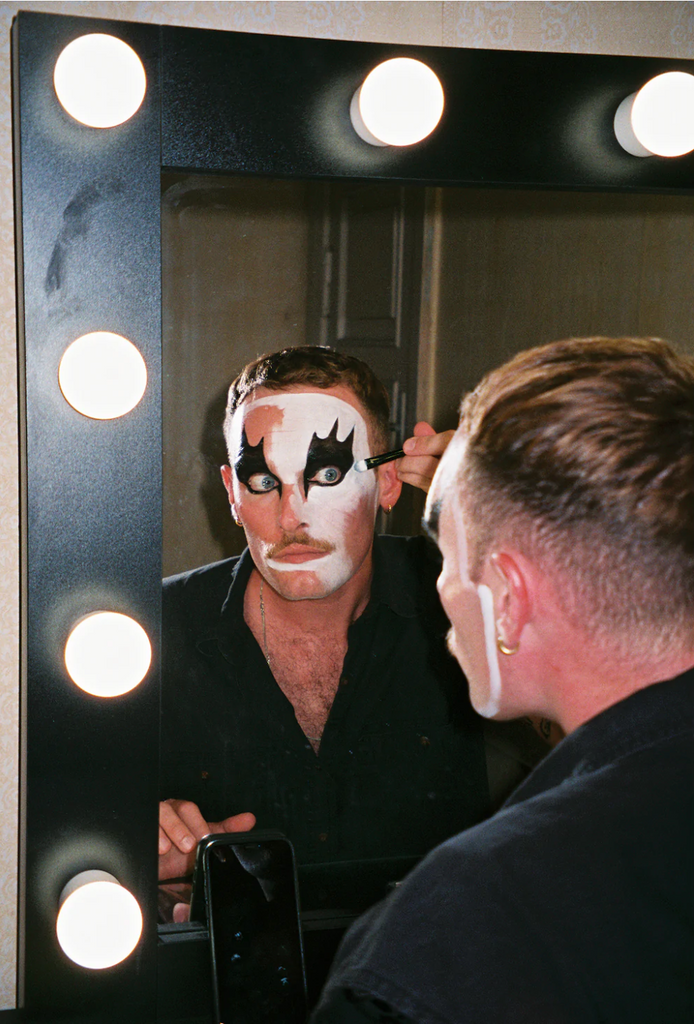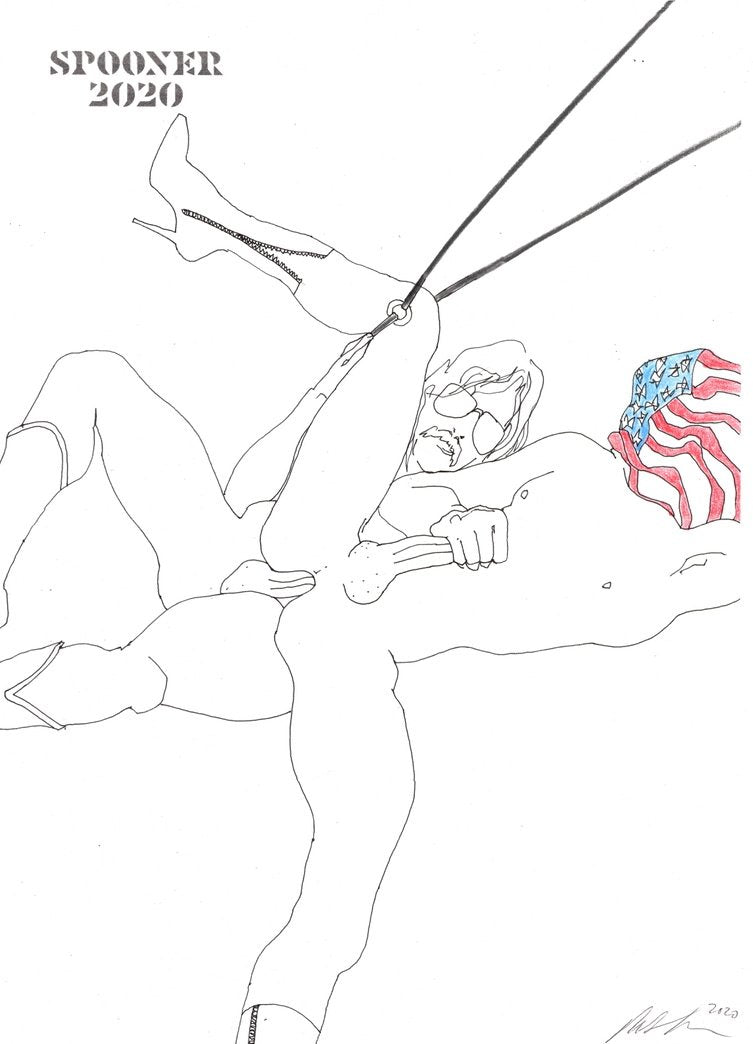As a creator whose practice utilizes deep historical research over long periods of time, what about photography compelled spontaneity?
I studied fine art (sculpture, painting, performance, conceptualism, institutional critique) which always felt separate from my social life; going out, dancing, performing, nightlife essentially. It was like the daytime was intellectual and the nighttime was less cerebral. I spent ten years researching aspects of queer activisms and non-biological inheritance and became obsessed with connecting the dots between stories. How artists from the past and present influenced each other, and from what histories their influences were speaking to and with.
When I got a film camera I immediately started taking portraits. I guess there’s a Warholian aspect - documenting the people around me in a way that freezes them in time as an icon. After I amassed hundreds of these portraits I realized that I was no longer researching the past, but documenting my present. It was a soft “ah-ha” moment… because I did not start taking portraits with the intention of it being my art practice per se.
Has the way you flow naturally in your photographic process changed how you approach your other work?
I think it’s part of a larger life moment of learning to be in the present. I think as an Aquarian I’m very oriented toward the future… and as a political artist I’m focused on knowing where we come from in order to change where we are going. But the portraits are past, present and future - the moment you take it, it becomes a document, but it also lives on and will tell a story as we move forward in time.

How does your recent exhibition, CONSTELLATIONS, fit into your photography journey (and broader artistic journey)?
It’s the first time I’m printing and exhibiting the portraits, so it’s definitely a learning experience. What I like most about it is that people come to the show and feel familiar with the subjects on the wall, or are curious to learn and know about people they haven’t seen before. It’s like a constellation, building in the gallery that extends beyond “art”.

It’s very fetching the way you describe the people in your life as an amalgamation of stars. What’s it like shooting portraits of pop culture icons? And friends? Where do the lines blur?
I say I only photograph people I know: friends, lovers, mentors, inspirations. That’s loose in the sense that I never met Christina Aguilera before I photographed her, but I certainly have been influenced by her as a pop culture icon. Relations are not always physical, we can obsess and relate and be influenced by people we’ve never actually met in person. I think that’s a fun way to think of constellation building - especially in instances of icons or inspirations who are no longer living in this form. When I was deep in my performance recreations I found myself in dialogues with dead artists - their archives, their friends, lovers, their stories. I never met Jack Smith, but I’ve definitely danced with his ghost.
As someone who has obsessed over the past, how do you find meaning and beauty in the present?
Photography has taught me to be more observant but also more spontaneous. If you see the shot, get it! Because the moment will pass. Also, archives are fun and juicy and nerdy, but being in a room of people has always excited me. Taking portraits has made me realize I basically really love people.
What do you wish to say through your photography, and larger body of work?
I’ve always hoped that my work can have an impact on the larger projects of dismantling oppressive conventions, rearranging the patriarchal, capitalist, white-supremacist ideologies that can make living very hard for people who cannot or do not want to behave, think, move and live by these violent social structures. I cannot say that taking portraits of people who excite me is changing the world, but I do believe that documenting the here and now may contribute to encouraging others to live how they want, in the body they are given, in the place from which they speak.
Photography is only one facet of Tyler Matthew Oyer! You’ve been called an “interdisciplinary gospel immortalist”... break that down for us.
Hahaha! That phrase was passed to me via Kembra Pfahler on the day we met in 2011. Kembra is someone I’ve always admired and have a close relationship with, I often refer to her as my artist mentor or artist mother. I guess what the phrase means is that I work in various forms, in episodic narratives, and in a way that attempts to transcend the here and now. I think about artists like Jack Smith, Genesis P-Orridge, and even designer Rick Owens… There's something ancient and futuristic about their work that I often feel akin to in how I approach and actualize my visual, performing, and music practices.
Is there a crossover of disciplines? Do you bring performance to your photography; music to your theatrics? Or are they separate entities?
I’m still figuring that out project by project… to me everything is overlapping and I think that’s just how I work. With my music practice everything is at play - composition, choreography, photo shoots, costumes, dramaturgy, scenography, merch design… it’s very fun to collapse the forms… like a gesamtkunstwerk or opera.
With so much creative output in numerous industries over the years, how do you define yourself? What are the throughlines?
I believe I am a temporary vessel for the queer spirit that has been passed around since the beginning of time. I do my work to maintain it, crossing with others who identify with it, and pass it on when my lifetime expires.

What are three touchstones in your artistic career you are proud of?
This is a hard question but I think it’s fun to consider. Most recent would be the premiere of my new concert work VENUS, which happened in a decommissioned prison chapel in the center of Vilnius, Lithuania, in July 2021. It’s the largest music show I’ve created and it felt like my personal Super Bowl halftime show.
Second, being granted the rights to restage Roy Cohn / Jack Smith, an AIDS play by Ron Vawter from 1992. It was the first time the play was fully restaged since Vawter’s final performances in 1994.
Third could be a festival that was set in the woods of Norway, outside Oslo called Soppen Festival in August of 2016. It was an epic line-up of queer and feminist performers including Narcissister, Elysia Crampton, Zackary Drucker, Marcel Alcala, Peter Clough, Nils Bech, and Actually Huizenga to name a few. I was the unofficial host and conjured amalgamations of queer icons into and through my body each time I appeared. It was the first time I fully actualized my “Calling All Divas” manifesto. It was a beautifully surreal experience.
MUSIC!
MORE MUSIC! And the next photo book. I have an idea for some ceramic sculptures as well, but right now the focus is music and photography.


